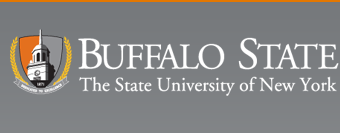
Event Title
Hand-waving in your mind: Revealing visual-spatial representations in working memory
Start Date
31-10-2013 11:00 AM
Description
We investigated what kind of mental representations are at work when you gesture while speaking. Past research reveals that gestured information is not mentally represented in a verbal format (Goldin-Meadow et al., 2001; Wagner et al., 2004), and one experiment suggests that it is neither spatial nor verbal in nature (Wagner et al., 2004). We tested this question more thoroughly, by using a speaking/gesturing task that required thinking about spatial information. Participants performed two tasks simultaneously: describing the spatial locations of objects in a picture, and remembering a spatial pattern of dots on a grid. On half of the trials they were instructed to gesture, and on the other half they were not allowed to gesture while describing the picture. A second group remembered a list of verbal letters for comparison. In the first two experiments we found null results, although numerically gesturing interfered with spatial memory representations, but not verbal ones. Two additional experiments added a modulator, aiming to reveal the predicted effects more clearly. We independently measured participants’ working memory capacity and compared those with higher vs. lower capacity. To date, we see an indication that gesturing uses a spatial format, as it decreased memory accuracy for the dot pattern, but only for higher working memory individuals. Consistent with past research, gesturing did not interfere with verbal memory. This series of experiments helps show that gesturing about spatial information utilizes spatial representations in the mind, and that this process differs for individuals with lower working memory resources.
Hand-waving in your mind: Revealing visual-spatial representations in working memory
We investigated what kind of mental representations are at work when you gesture while speaking. Past research reveals that gestured information is not mentally represented in a verbal format (Goldin-Meadow et al., 2001; Wagner et al., 2004), and one experiment suggests that it is neither spatial nor verbal in nature (Wagner et al., 2004). We tested this question more thoroughly, by using a speaking/gesturing task that required thinking about spatial information. Participants performed two tasks simultaneously: describing the spatial locations of objects in a picture, and remembering a spatial pattern of dots on a grid. On half of the trials they were instructed to gesture, and on the other half they were not allowed to gesture while describing the picture. A second group remembered a list of verbal letters for comparison. In the first two experiments we found null results, although numerically gesturing interfered with spatial memory representations, but not verbal ones. Two additional experiments added a modulator, aiming to reveal the predicted effects more clearly. We independently measured participants’ working memory capacity and compared those with higher vs. lower capacity. To date, we see an indication that gesturing uses a spatial format, as it decreased memory accuracy for the dot pattern, but only for higher working memory individuals. Consistent with past research, gesturing did not interfere with verbal memory. This series of experiments helps show that gesturing about spatial information utilizes spatial representations in the mind, and that this process differs for individuals with lower working memory resources.

